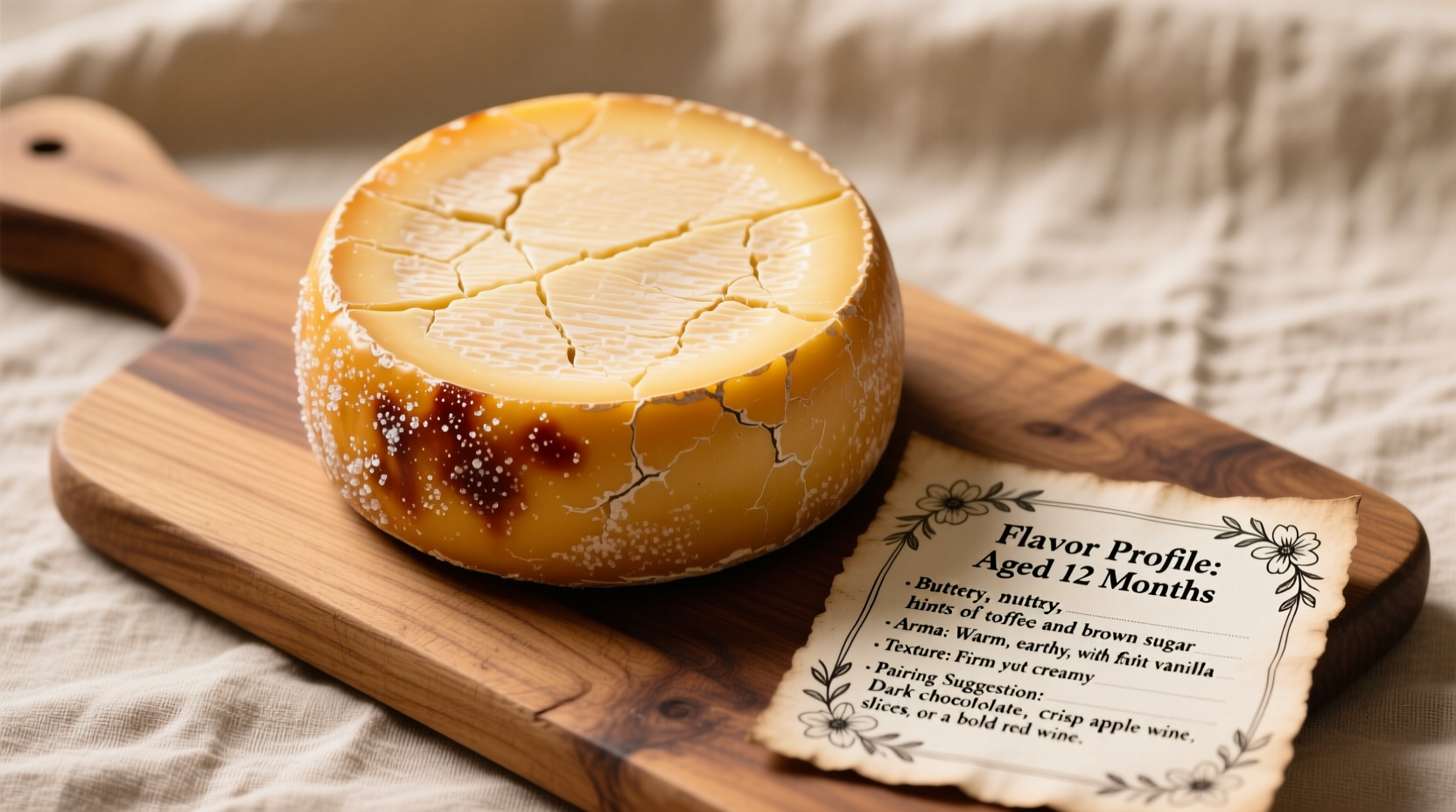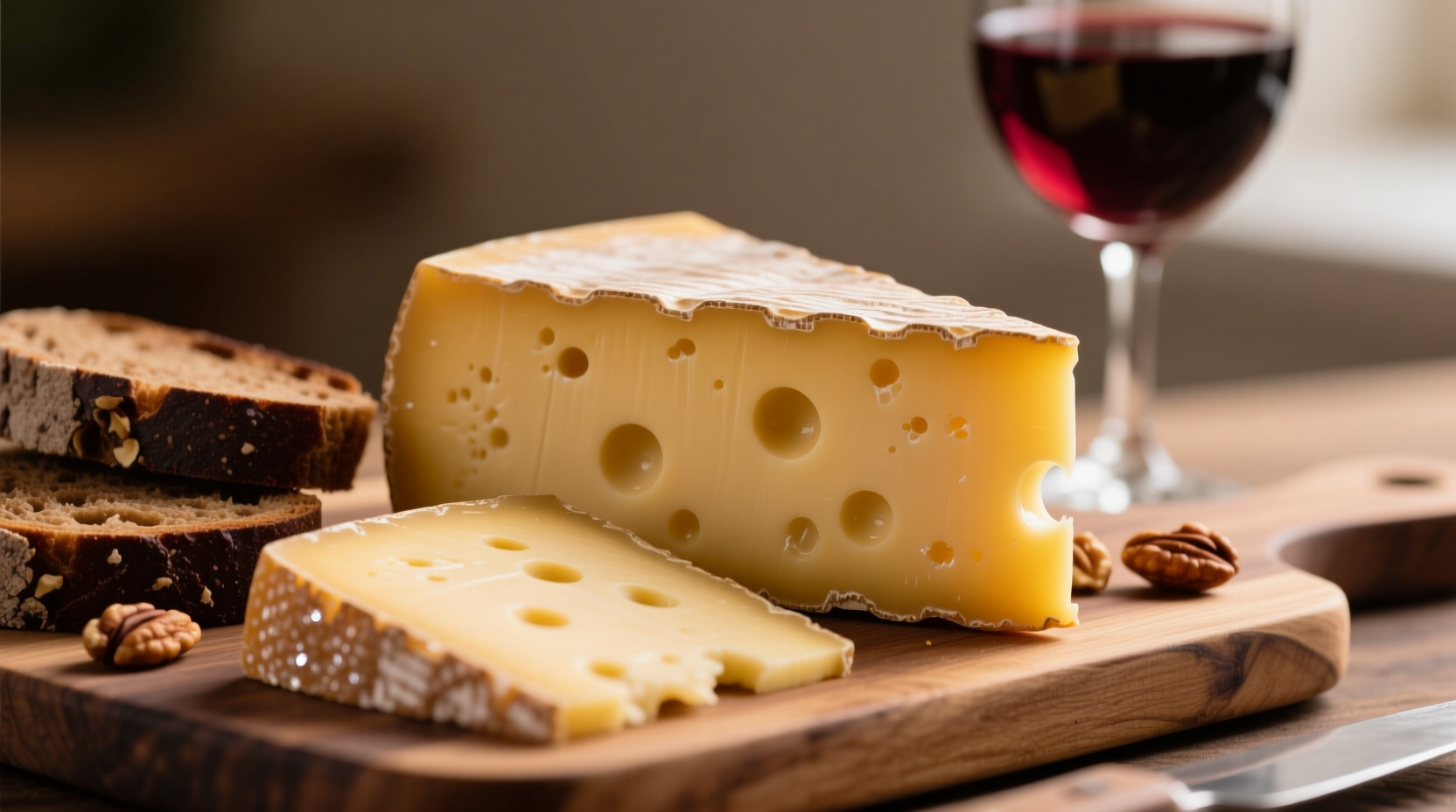Discover why Gouda has captivated cheese lovers for centuries beyond its photogenic orange wax. This Dutch classic transforms dramatically as it matures, offering one of the most fascinating flavor journeys in the cheese world. Whether you're selecting your first wedge or building a sophisticated cheese board, understanding Gouda's evolving taste profile unlocks endless culinary possibilities.
The Gouda Aging Timeline: How Time Transforms Flavor
Gouda's magic lies in its remarkable transformation during aging. Unlike many cheeses that simply become sharper, Gouda develops entirely new flavor dimensions through biochemical changes in its fat and protein structure. This evolution creates distinct categories recognized by Dutch cheesemakers:
| Aging Period | Common Name | Flavor Development Process | Key Chemical Changes |
|---|---|---|---|
| 4 weeks - 2 months | Jong (Young) | Lactic sweetness dominates with mild butter notes | Initial lactose breakdown; minimal proteolysis |
| 2 - 6 months | Jong Belegen (Young Matured) | Buttery notes intensify; subtle nuttiness emerges | Increased fatty acid development; early amino acid formation |
| 7 - 12 months | Belegen (Matured) | Pronounced caramel notes; crystalline texture begins | Significant proteolysis; tyrosine crystals form |
| 12 - 18 months | Extra Belegen (Extra Mature) | Complex butterscotch; nutty depth; firm crystallization | Advanced lipolysis; multiple amino acid compounds |
| 18+ months | Old/Wee (Oud) | Intense umami; toasted walnut; sweet-savory balance | Maximum enzymatic breakdown; complex flavor compounds |
According to research from Wageningen University's Dairy Science Department, Gouda's distinctive caramel notes emerge around the 9-month mark when Maillard reactions between amino acids and reducing sugars intensify. The Dutch Cheese Association confirms that traditional Gouda production strictly controls aging environments at 10-12°C with 85-90% humidity to optimize this flavor development.
Decoding Gouda's Sensory Profile
Understanding Gouda requires examining all sensory dimensions. The Dutch Cheese Museum in Alkmaar has documented precise tasting protocols used by master affineurs:
Taste Components
- Sweetness: Young Gouda shows lactose-derived sweetness that transforms into cooked sugar notes in aged varieties
- Saltiness: Typically 1.5-2.0% salt content, providing balance without overwhelming other flavors
- Umami: Increases dramatically with age, reaching levels comparable to Parmesan in extra-aged varieties
- Bitterness: Minimal in quality Gouda; any pronounced bitterness indicates improper aging
Texture Evolution
Texture changes are equally important as flavor development. Young Gouda (under 6 months) offers a smooth, springy texture that becomes increasingly crumbly and crystalline. These crystals, primarily tyrosine amino acids, create delightful crunch points in aged Gouda that enhance the flavor experience by releasing concentrated taste compounds.

Practical Pairing Guide: Maximizing Gouda's Flavor Potential
Pairing Gouda correctly reveals hidden flavor dimensions. Based on sensory analysis from the International Dairy Federation:
Young Gouda (1-6 months)
- Wine: Crisp white wines like Sauvignon Blanc or dry Riesling
- Beer: Light lagers or wheat beers
- Accompaniments: Fresh fruit, mild crackers, light honey
- Culinary Uses: Melts beautifully for sandwiches, grilled cheese, or cheese sauces
Aged Gouda (12+ months)
- Wine: Full-bodied reds like Cabernet Sauvignon or aged Port
- Beer: Belgian Dubbels or barrel-aged stouts
- Accompaniments: Dark chocolate (70%+), dried fruits, walnut bread
- Culinary Uses: Shaved over salads, incorporated into compound butters, or enjoyed solo with fruit preserves
Avoiding Common Gouda Misconceptions
Several myths persist about Gouda's flavor profile. Research from the European Dairy Education Board clarifies:
- Myth: All Gouda tastes the same regardless of age
Reality: A 2-month Gouda shares almost no flavor characteristics with a 24-month variety beyond basic dairy notes - Myth: The orange color indicates stronger flavor
Reality: Annatto coloring is purely cosmetic; flavor depends entirely on aging process - Myth: Gouda is always milder than Cheddar
Reality: Extra-aged Gouda develops more complex flavor compounds than most Cheddars
Bringing Gouda Into Your Kitchen
Understanding Gouda's flavor journey transforms how you use it in cooking. Professional chefs at the Culinary Institute of America recommend:
- Substitute young Gouda for mild Cheddar in macaroni and cheese for creamier texture
- Add small chunks of aged Gouda to tomato-based sauces for umami depth without saltiness
- Create a flavor layering effect by combining young and aged Gouda in gratins
- Grate extra-aged Gouda over roasted vegetables for a sweet-savory finish
When selecting Gouda, look for the boerenkaas (farmer's cheese) designation for traditional production methods. The Dutch Food Safety Authority requires this label only for cheeses made from unpasteurized milk using time-honored techniques that develop superior flavor complexity.











 浙公网安备
33010002000092号
浙公网安备
33010002000092号 浙B2-20120091-4
浙B2-20120091-4